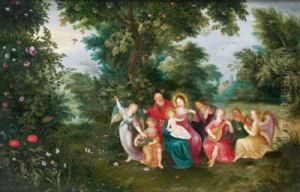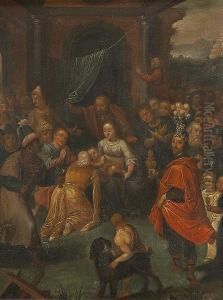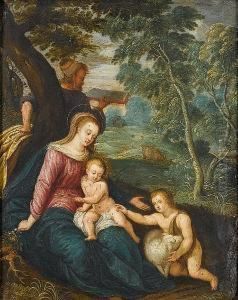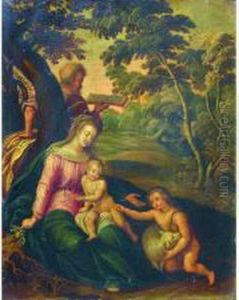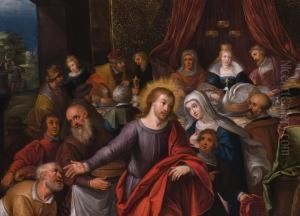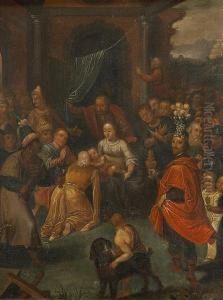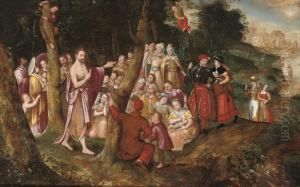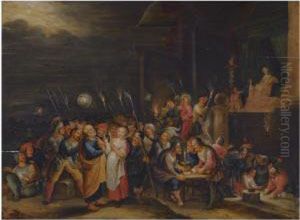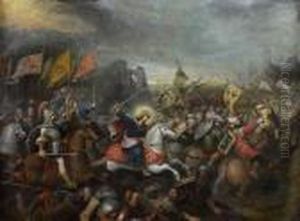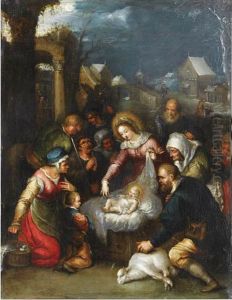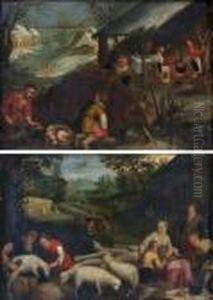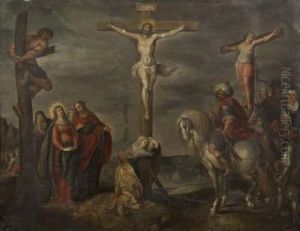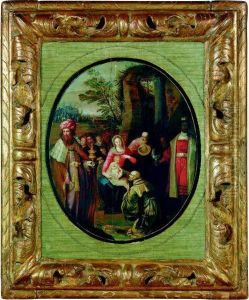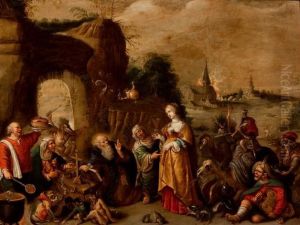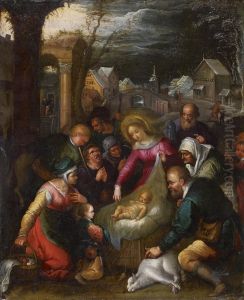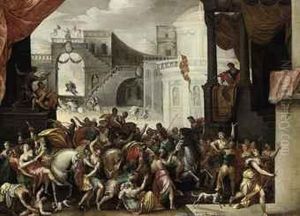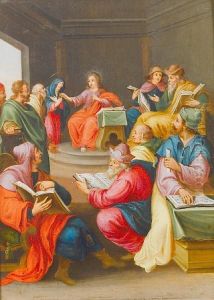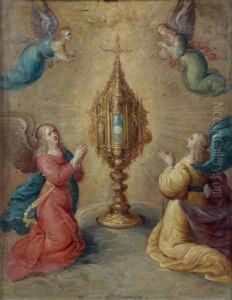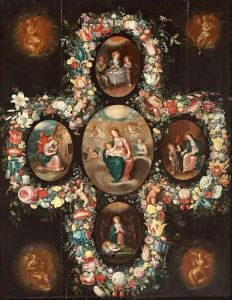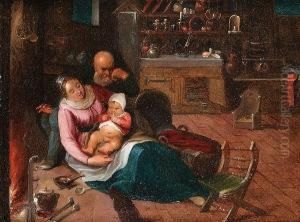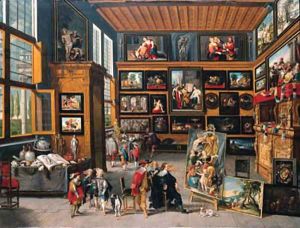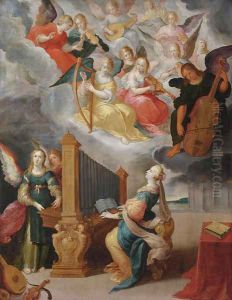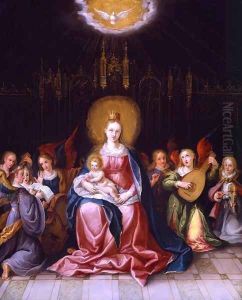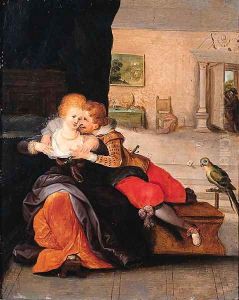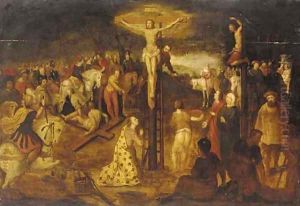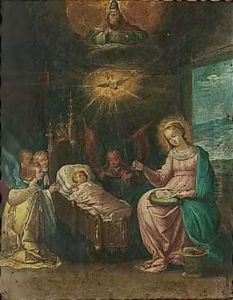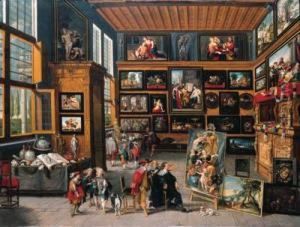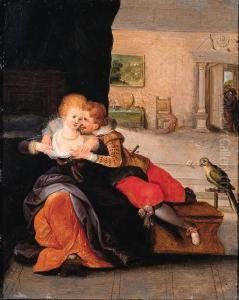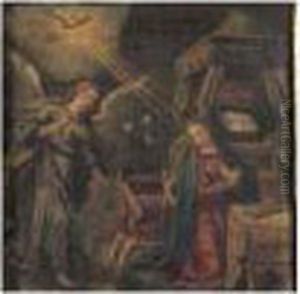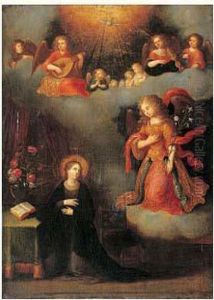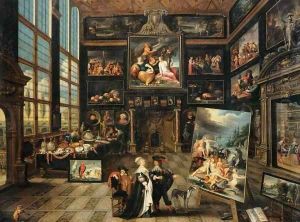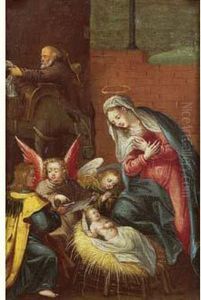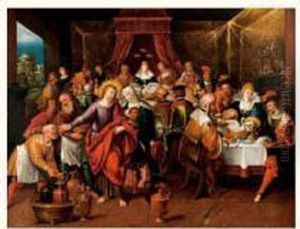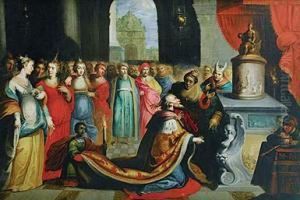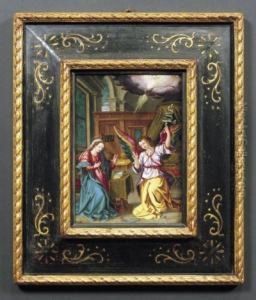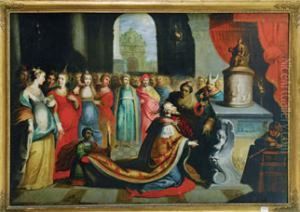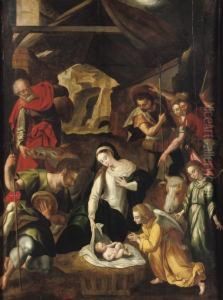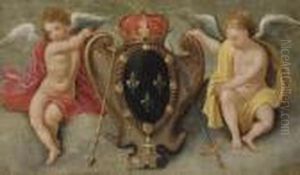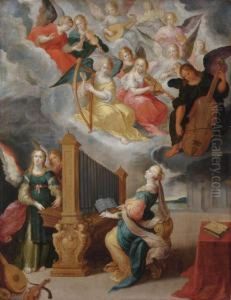Cornelis de Baellieur Paintings
Cornelis de Baellieur was a Flemish Baroque painter born in 1607 in Antwerp, which was then part of the Spanish Netherlands. He was known for his detailed still life and gallery paintings, which were a popular genre at the time. De Baellieur specialized in creating intricate compositions that depicted lavish art collections within opulent interior settings, often reflecting the grandeur of the era's art collectors and their galleries.
De Baellieur was trained by the still life painter Frans Francken the Younger, who was a prominent figure in the Antwerp artistic community. His style was influenced by the Francken family's approach to painting, which was characterized by a keen attention to detail and a penchant for rich subject matter. Cornelis de Baellieur's works feature a combination of various objects such as sculptures, paintings, scientific instruments, and exotic items, showcasing the wealth and intellectual interests of the art patrons of his time.
His career flourished in the mid-17th century, and his pieces were highly sought after by collectors and art connoisseurs. De Baellieur's paintings are often considered a visual documentation of the cultural achievements of the period, and they serve as historical records of the collections that existed in the homes of the affluent during the Baroque period.
Despite his success, there is not a wealth of information on the personal life of Cornelis de Baellieur. He remained in Antwerp for most of his life, where he contributed to the city's artistic reputation. He died in 1671, leaving behind a legacy of works that continue to be studied and admired for their beauty and historical value. His paintings can be found in various museums and private collections around the world, providing insight into the artistic tastes and cultural environment of the 17th-century Flemish elite.

